Are you looking for a tasty, crunchy substitute for water chestnuts?
You don’t have to look any further because plenty of suitable options are here!
Bamboo shoots, almond nuts, hazelnuts… can be used as alternatives to water chestnuts, and they also come with unique health benefits.
Keep reading to learn why you should consider substituting the beloved water chestnuts with these nutritious vegetables!
What Are Water Chestnuts?
Water chestnuts are a type of aquatic vegetable grown in marshy areas of Southeast Asia, most notably China.
They have a crunchy texture and subtly sweet taste, making them an ideal addition to stir-fries, salads, and other dishes.
Water chestnuts can be used both raw and cooked. When raw, they add a crisp texture to salads.
They can be boiled or steamed and added to soups, stir-fries, and other dishes when cooked.
They are also a wonderful addition to vegetarian dishes, providing a unique crunchy texture.
Water chestnuts can also be mixed with ground pork or beef for dumplings and spring rolls.
In Chinese cuisine, water chestnuts are often used to make sweet desserts such as taro cake and puddings.
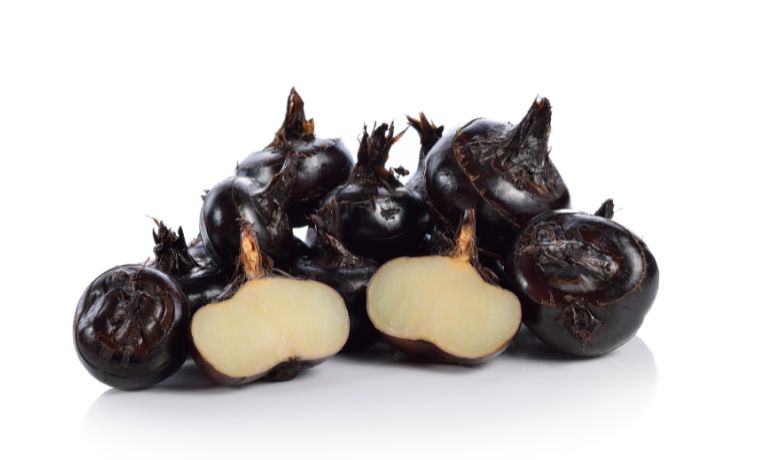
Substitutes For Water Chestnuts
There are plenty of options when you’re looking for an alternative to water chestnuts.
Almond Nuts
Almond nuts are the edible seed of the almond tree, native to Southwest Asia and North Africa.
The nuts have a distinctively sweet flavor and aroma, making them popular as a snack or ingredient.
[display-posts id=”2989″ image_size=”thumbnail” posts_per_page=”1″]
Additionally, almonds can often provide more flavor and nutrition than water chestnuts.
Almonds are a great source of protein, healthy fats, fiber, minerals such as magnesium and phosphorus, and vitamins, including B vitamins and Vitamin E.
Almond nuts can be incorporated into your daily diet in various ways, such as almond milk and almond butter.

Hazelnuts
Hazelnuts, also known as filberts, are a nut native to Europe and some parts of Asia.
They grow inside hazelnut shells that can be cracked open with slight pressure from the fingers or a tool like a nutcracker.
Hazelnuts have a sweet and nutty flavor and are rich in monounsaturated fats, dietary fiber, and vitamins and minerals.
Hazelnuts can be a substitute for water chestnuts in cooking due to their nutty flavor, making them a good alternative ingredient in dishes like stir-fries.
Additionally, they have fewer calories and fat than water chestnuts, making them an excellent option for those watching their weight.
Hazelnuts can also be used as a salad topping or a snack on their own, and they are often processed into products like hazelnut paste and extracts for baking purposes.
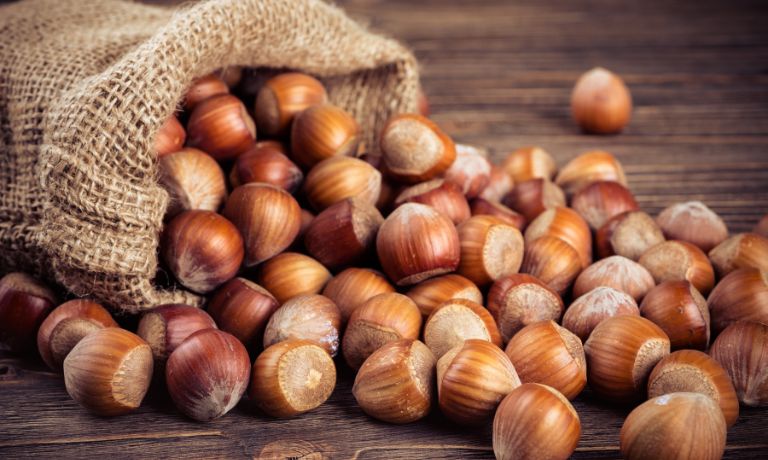
White Turnips
White turnips are root vegetable that looks like potatoes with a mild, slightly sweet taste.
They can be eaten raw or cooked in a variety of dishes.
[display-posts id=”2820″ image_size=”thumbnail” posts_per_page=”1″]
As a water chestnut substitute, white turnips offer a similar crunch and texture without the extra sweetness found in water chestnuts.
Additionally, they contain fewer calories than water chestnuts and are a good source of dietary fiber, vitamins and minerals.
When used in place of water chestnuts, white turnips can help to add a crunchy texture to recipes such as stir-fries, salads, soups, stews, and more.
Remember to select young, firm turnips and cut them into small cubes or thin slices before adding them to recipes.
This will ensure that they retain their crunchy texture when cooked.
Additionally, adjusting the amount of seasoning used in a recipe may be necessary since white turnips have a milder flavor than water chestnuts.
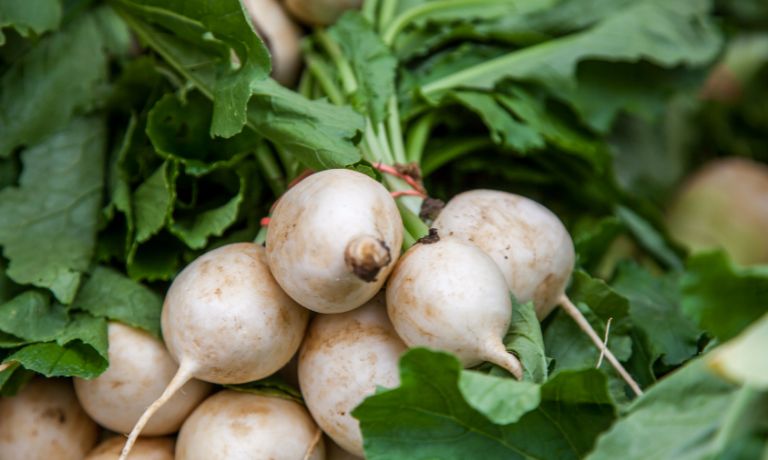
Jicama
Jicama, also known as the Mexican yam bean, is a root vegetable native to Mexico and Central America.
It has a firm texture and mild flavor, which makes it perfect for adding crunch to salads or stir-fries.
[display-posts id=”2768″ image_size=”thumbnail” posts_per_page=”1″]
It is also low in calories and carbohydrates, making it healthier than water chestnuts.
Jicama can be sliced, diced, or shredded to add crunch to salads or stir-fries.
It is also delicious when boiled, steamed, grilled, fried, or roasted.
Additionally, jicama can be used as starch in wraps, tacos, burritos, and other dishes.

Celery
Celery is a low-calorie vegetable that can also be used as an herb.
The stalks of celery have a mild flavor and are crunchy, making them ideal for salads or as a snack.
Celery can also be cooked as a substitute for water chestnuts in many dishes.
It has been found to offer a similar crunch and texture when cooked, making it a great substitute for dishes that normally include water chestnuts.
Additionally, celery contains healthy nutrients like vitamin K, folate, and beta-carotene, which can benefit health.
Celery can be used in soups, stir-fries, casseroles, salads, and other recipes.

Daikon
Daikon is a large, white, pungent radish that originated in Asia. It is now widely used in many different cuisines around the world.
Daikon has a sweet flavor and crunchy texture, making it an ideal cooking substitute for water chestnuts.
[display-posts id=”2739″ image_size=”thumbnail” posts_per_page=”1″]
The taste of daikon is similar to that of water chestnuts, but it has a more intense flavor.
Daikon is high in vitamins A, C, and E and minerals such as calcium and magnesium.
It also contains dietary fiber, which helps the body absorb nutrients more effectively.
Daikon can be eaten raw or cooked and is often used for pickling or grating into salads and other dishes.
It can also be boiled, steamed, stir-fried, or roasted.
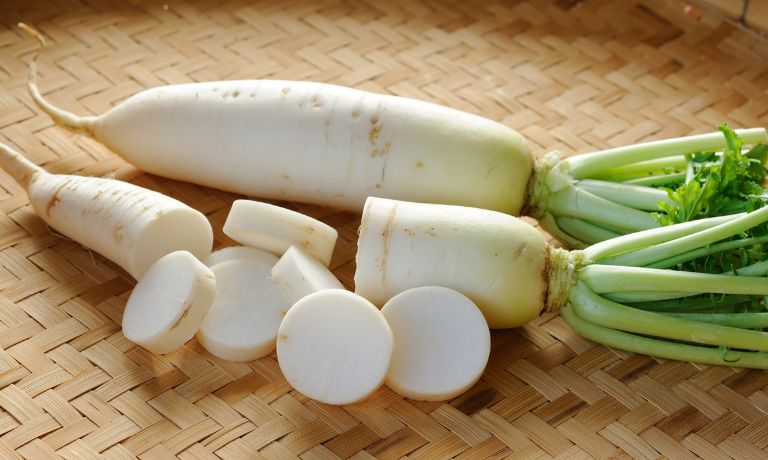
Bamboo Shoots
Bamboo shoots are the edible young shoots of certain species of bamboo.
They are known for their crunchy texture and slightly sweet flavor, making them popular in various dishes.
This makes them an ideal ingredient in stir-fries, salads, soups, and more.
Bamboo shoots are particularly popular in Asian cuisine due to their flavor profile and versatility.
They are high in fiber and low in calories, making them a healthy choice for those looking to up their vegetable intake.
Additionally, bamboo shoots are rich in minerals such as calcium, iron, zinc and magnesium.
Bamboo shoots are fresh, canned or frozen at most local grocery stores.
When buying them canned, make sure to rinse off the brine before using them in your recipes.
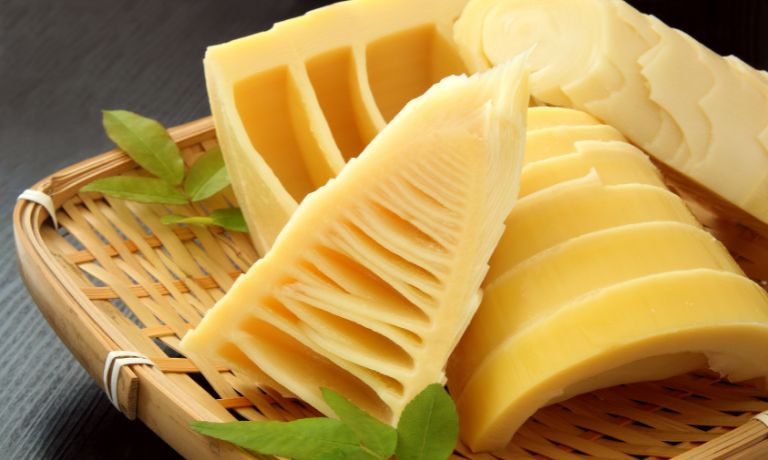
FAQs
What Nuts Have The Flavor Of Water Chestnuts?
The most common nut with the flavor of water chestnuts is the macadamia nut, which has a similar sweet and earthy taste.
Other nuts that have a slight resemblance are cashews or pistachios, but they won’t be an exact match like the macadamia nut would.
Can Chestnuts Be Substituted For Water Chestnuts?
Yes, chestnuts can be substituted for water chestnuts in many recipes.
However, there are some important differences between the two that need to be considered when substituting.
Can You Use Water Chestnuts In Place Of Celery?
Yes, most recipes can use water chestnuts instead of celery.
Water chestnuts have a crunchy texture that mimics the crunch of celery and they add a slightly sweet flavor to dishes.
Conclusion
As you can see, plenty of options to substitute for water chestnuts can be used in cooking.
Celery, daikon, radish and bamboo shoots all provide a similar crunchy texture and flavor while also being packed with essential vitamins and minerals.
Try adding some of these vegetables to your dishes for a nutritious boost, or incorporate one as a replacement for water chestnuts in your favorite recipes.
These alternatives allow you to enjoy the same delicious flavors without compromising nutrition.

